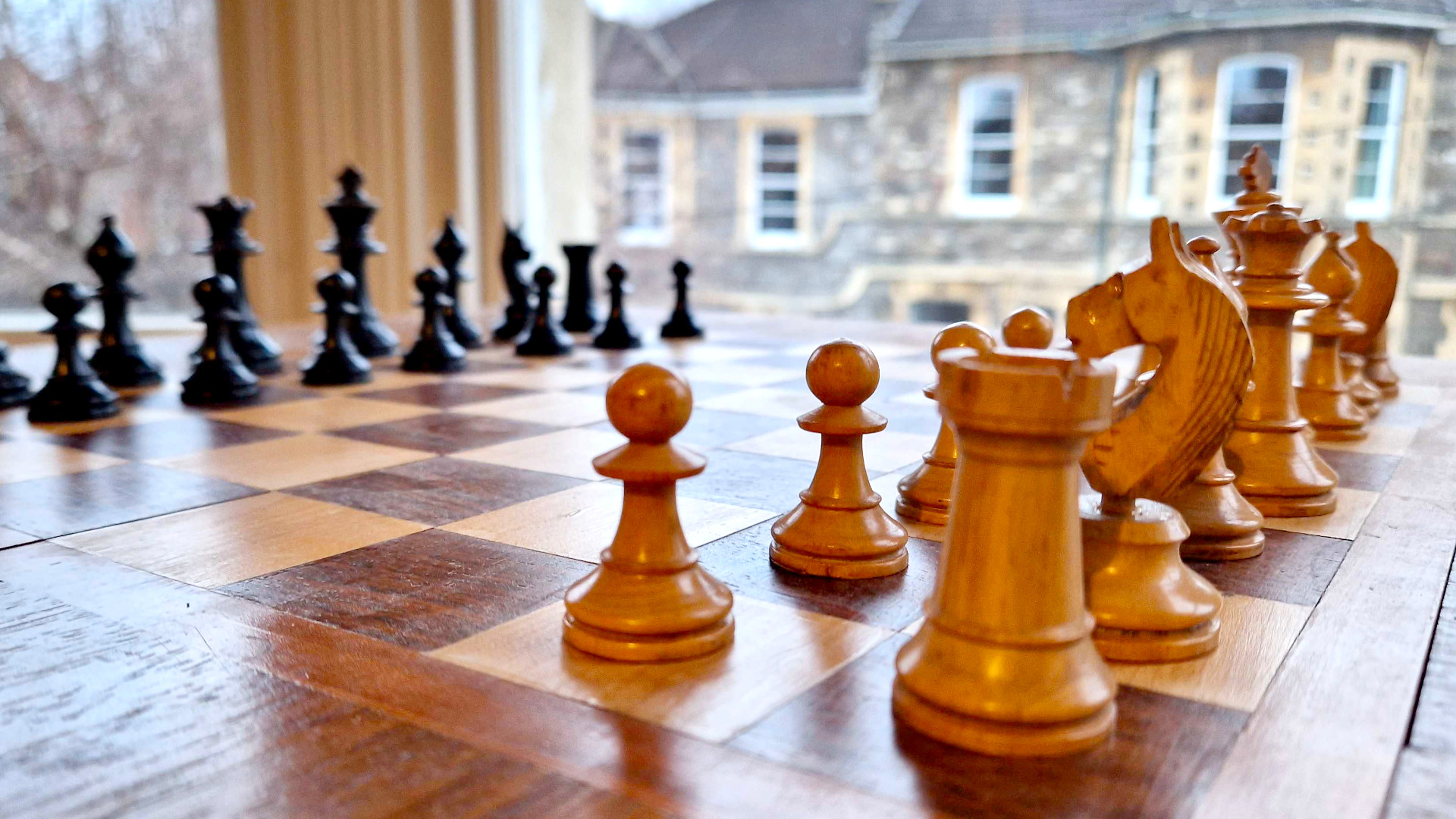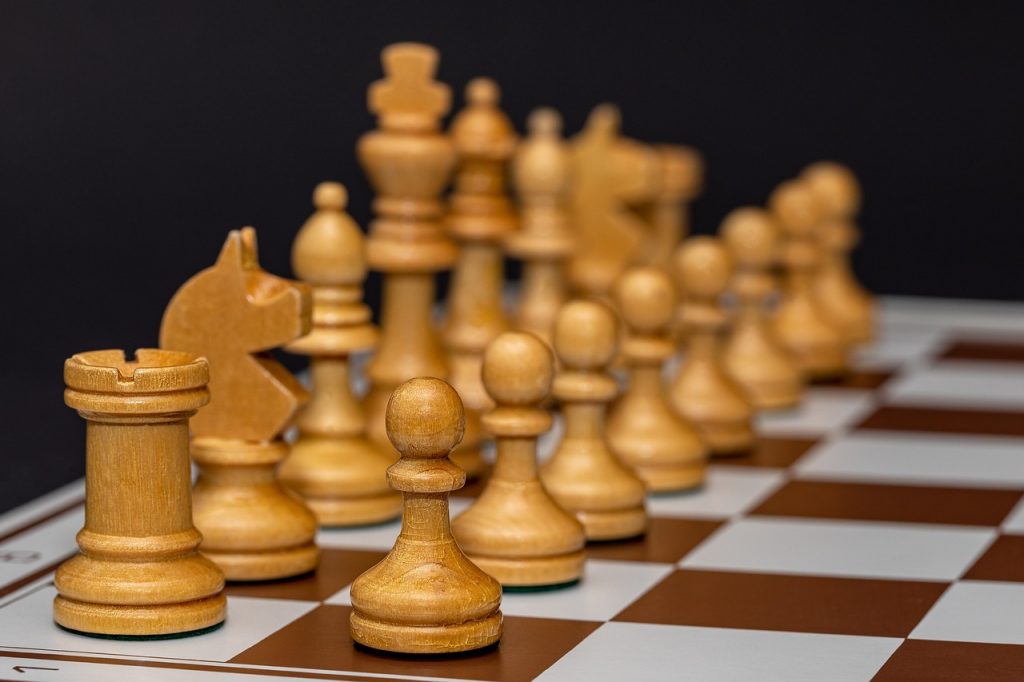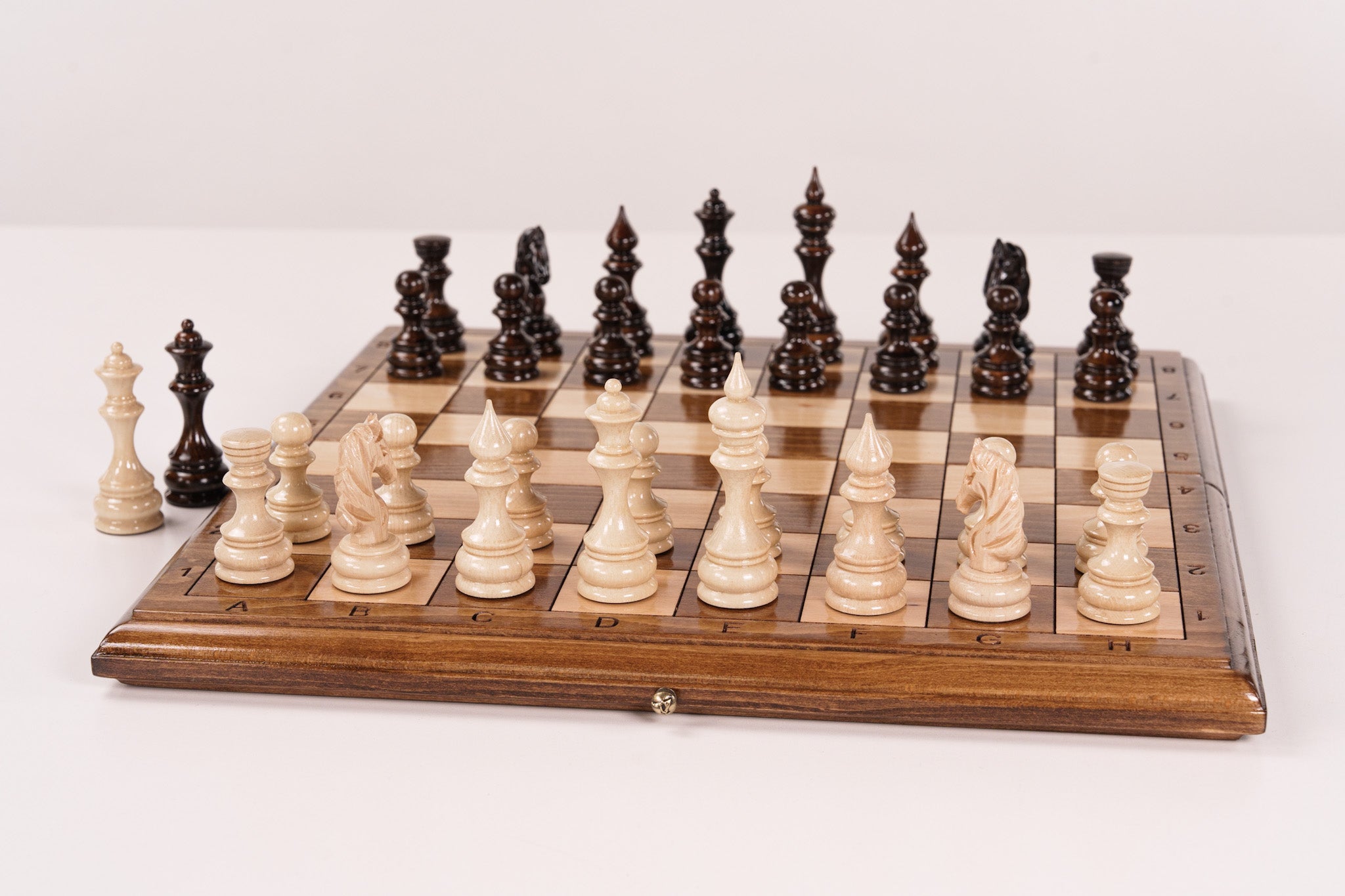1.Why you should analyze your games (and how often)
If you want to improve consistently, analyzing your own games is the single highest ROI habit you can build. Playing trains instincts; analyzing trains understanding. When you make a mistake in a game, you learn in two ways:
Surface learning: You remember “I lost because I missed a tactic.”
Deep learning: You understand why you missed it, what patterns to practice, and which plans to adopt next time.
Aim to analyze every rated game (or every serious casual game) you play. Rapid practice games you use for tactics training may deserve less scrutiny, but treat long and rated games as study material. Commit to a short review session within 24 hours (fresh memory) and a deeper annotated session within a week.
2.The 6-step post-game review workflow (repeatable)
Below is a practical, coach-style workflow you can run after every serious game. Treat it like a recipe—do the same steps every time.
Record context (2 min)
Time control, your form/energy, opening chosen, result, and a one-sentence takeaway.
Example: “Rapid 15|10, tired, played London System, lost on time in winning position.”
Quick mental replay (5–10 min, no engine)
Replay the game from memory on a physical board or in your GUI. Note the moments that felt unclear, the moves you hesitated on, and the candidate tactics you missed. This primes your brain for targeted work.
Find the critical moments (15–30 min)
Use a three-tier check: Tactical errors, Strategic misunderstandings, Time management/psychological errors. Mark 3–6 candidate moves for deeper review.
Engine-lite check (10–20 min)
Run an engine, but only to verify your candidate moves and to find tacticaloversights. Don’t auto-annotate the whole game—engines overwhelm and teach you to memorize moves, not ideas.
Write 3 action items (5–10 min)
Convert findings into practice tasks: e.g., “drill fork patterns,” “study minority attack in QGD,” or “practice 30-second increment games.”
Schedule a follow-up (1 week)
Revisit after practicing the targeted drills. Replay the critical position again and see if your choices changed.
Follow this workflow religiously for 6–8 weeks and you’ll be amazed how quickly your recurring mistakes shrink.
3.Tools you need — digital and physical

Good tools reduce friction and increase study time. Here’s a minimal and an ideal setup.
Minimal (free & fast):
A browser-based GUI (lichess.org or chess.com analysis board)
A free engine (Stockfish) integrated in the GUI
A text file or notebook to take notes
Ideal (one-time investment):
Desktop GUI (ChessBase, SCID, or similar) + Stockfish for deeper analysis
A physical study board for replaying key positions. Physical work dramatically improves retention — if you don’t own one, choose a clear chess set.
Weighted, durable pieces so practice feels satisfying — consider a set of solid chess pieces.
A notebook or journaling app to record patterns and action items.
Optional: online cloud database for storing annotated games and tagging recurring mistakes.
Tip: A sturdy, readable board plus steady pieces makes it painless to replay positions multiple times. Browse options at AA Chess (starter and tournament chess sets) and look into chess pieces if you want a heavier feel.
(Links above point to helpful equipment choices for repeated practice.
4.How to spot critical moments (not just blunders)
A “blunder” is obvious: you lose material or mate in 1. A critical moment is subtler: a decision where a different plan would have yielded a lasting advantage or where the game’s evaluation changed direction. Spotting these is how you move from tactical-level improvement to real game understanding.
Method to find critical moments:
Scan evaluation swings: In your GUI, look for positions where the evaluation changes significantly (±0.5+). Those are candidate spots.
Self-reporting: Recall where you felt uncomfortable or spent extra time—these are often critical.
Tactical check: Was a forcing tactical motif missed (fork/pin/discovered attack)? If so, tag it as “pattern drill.”
Strategic check: Did you mis-evaluate a pawn structure, piece trade, or king safety? Tag it as “plan drill.”
Time/psychology check: Did a time scramble produce a mistake? Tag it as “clock drill.”
Create a short table in your notes for each critical moment:
| Move # | Side | Type (Tactic/Plan/Time) | Why it matters | Action Item |
|---|---|---|---|---|
| 18 | White | Tactic | Missed fork on c6 | Drill knight fork patterns (10/day) |
| 34 | Black | Plan | Chose passive defense; lost initiative | Study active defense & rook files |
This disciplined tagging converts vague feelings into concrete drills.
5.Engine use: when to trust it, when to ignore it
Engines are powerful but teach the wrong lessons if misused. Use them like a microscope—zoom in on specifics after doing your own thinking.
Do this first (without engine):
Replay the game and write what you thought was best at each critical moment. Try 1–2 alternative candidate moves and assess them on your board.
Then do this (engine-lite):
Run the engine and compare its top line to yours. If the engine shows a tactical refutation you missed, treat it as a puzzle—solve it from the position without looking at the full line immediately.
Never do this:
Blindly “one-click annotate” the whole game and accept engine comments as gospel. That will make you a mimic, not a thinker.
Use engines for:
Detecting missed tactics (short forcing lines).
Verifying that a candidate plan holds up tactically.
Finding surprising defensive resources to learn from.
A practical engine protocol (safe):
After your manual analysis, run engine at moderate depth (e.g., 15–20) to spot missed tactics.
For each engine-suggested move, set a 5-minute timer and try to find the idea yourself.
Only adopt long engine lines if you can distill why the move works (principle), not just that it works.
6.A practical annotated analysis example (step-by-step)

Below is a realistic example you can emulate. I’ll compress the game to highlight the workflow. (Use a physical chess set to replay.)
Game summary: Rapid 15|10. White (you) vs Black. Result: Loss by blunder in a winning position.
Step A – Quick replay (no engine):
Replay the whole game from memory. Mark moves where you hesitated. You note hesitation on moves 14, 22, and 36.
Step B – Mark critical moments:
Move 14 (white to move): you played 14.Rfe1 but spent 5+ minutes. Why? Because you considered 14. Qd3. Mark as “plan uncertainty.”
Move 22: you declined to trade queens and later lost initiative. Tag as “strategic mis-evaluation.”
Move 36: time scramble blunder, lost a piece. Tag as “time management.”
Step C – Tactical check with engine (short):
Engine flags move 20 as a missed tactic: 20.Nxe5! for a clear advantage. You hadn’t seen the fork because you were fixated on guarding f2.
Step D – Deeper reflection:
Why did you miss the fork? Because you evaluated only the king safety (fear) and didn’t scan for opponent hanging pieces. Action item: daily 10 fork-pattern puzzles.
Why did you decline queen trade? You thought your attack would continue, but the trade actually opened a file for the opponent’s rooks. Action item: study "when to trade queens" rules; replay 5 model games and annotate.
Step E – Convert to drills (3 items):
10 fork puzzles per day (2 weeks).
Study 5 games focusing on queen trades and outcomes; take notes (1/week).
Practice time control: play 10 games with 15+10 and force a 3-move countdown at move 30 to simulate endgame time scrambles.
Step F – Follow-up schedule:
Run drills for a week; re-evaluate the same position in one week and see whether different moves are chosen. If better, the drill worked.
This annotated approach (human first → engine verify → concrete drills) is the backbone of coach-style study.
7.Metrics that actually measure improvement
Don’t just track rating. Use micro-metrics that reflect what you practice:
Tactical accuracy (% puzzles solved under time) — shows pattern recognition growth.
Blunder rate per game (count of >1 pawn blunders) — reduces with analysis.
Critical-moment conversion — number of critical moments where you later find better moves in follow-up review.
Time usage pattern — % of time spent in opening/middlegame/endgame; aim to keep time well-distributed.
Annotation compliance — how many games you fully analyze per week.
Log these weekly. A simple spreadsheet helps you see trends. If your blunder rate drops and tactical accuracy rises, you’re improving even if rating lags (ratings often lag behind actual skill changes).
8.Common mistakes in analysis and how to avoid them
Over-relying on engines. Fix: think first, then use engine to verify.
Not turning findings into drills. Fix: always produce 2–3 concrete practice tasks after analysis.
Analyzing only losses. Fix: analyze wins too — learn why your winning method worked.
Being inconsistent. Fix: schedule analysis time: 2 games/week as a minimum.
Using a bad study environment. Fix: practice on a clear board with stable pieces — small friction means more practice. Consider a practical chess set and heavier chess pieces to make setup painless.
9.Turning analysis into training tasks — 10 drills

Tactical motif sprint — 10 minutes of forks/pins/discovered attacks.
Critical-moment replay — set the board at a critical moment and play both sides against yourself.
Blindfold recall — replay the first 15 moves from memory, then check.
Time-scramble simulation — play 10 games with 5-minute sudden-death at move 30.
Opening trap drill — play the lines you lost until you can return to them without hesitation.
Endgame conversion drill — practice 5 recurring endgame motifs from your games.
Decision journal — write one paragraph per game explaining your plan in the middlegame.
Engine puzzle reverse — find why the engine’s best move is best; list the tactical reasons.
Opponent model — catalog one opponent’s common mistakes and build a mini-repertoire to exploit them.
Physical replay — practice 3 critical games on a physical board using a reliable chess set and quality chess pieces.
Each drill maps directly to a common problem found in analysis.
10.Customer impressions: real players who changed with this system
“I used to glance over my losses. After adopting the 6-step review method, my blunder rate halved in three months. Doing the replay on a proper chess set made patterns click.” — R., 1320 → 1480
“The engine-lite policy saved me. I used to accept engine lines and felt lost. Now I think, test myself, then verify. My calculation confidence improved and I stopped copying engine lines blindly.” — A., 1550 rated
“Small things matter — weighted pieces helped. When drills got physical, I did them more. My set from A&A Chess (chess pieces) is my most-used training tool.” — M., club player
These are composite-style testimonials representative of common successful outcomes. Players who combine disciplined analysis + concrete drills + a comfortable study setup (reliable chess set) tend to make the most sustained gains.
11.FAQ — short answers for fast reference
Q: How long should my analysis take per game?
A: 30–60 minutes for a serious rated or classical game. Rapid games: 10–20 minutes.
Q: Should I analyze wins?
A: Yes — analyze wins to extract winning plans and avoid overfitting only to losses.
Q: How many games should I fully analyze each week?
A: Aim for 2–4 fully annotated games per week (quality over quantity).
Q: Do physical boards matter?
A: Yes — many players report faster retention when replaying positions on a physical board. Consider a clear chess set and steady chess pieces.
12.Final checklist & one-page template you can copy
Before you start analysis
Save the PGN.
Set aside 45–60 minutes.
Have a physical board ready (optional but recommended — see chess set).
Analysis template (copy into your notebook):
Game context: _______ (time control, date, opening)
Quick replay notes (no engine): _______
Critical moments (list 3–6 with move numbers): _______
Engine findings (tactical misses): _______
Action items (3 drills): 1) ______ 2) ______ 3) ______
Schedule follow-up: _______ (date)
One-week commitment: Analyze 2 games, do one drill daily, and replay two critical positions on a physical board.
Closing: analyze chess games like a coach
Improvement is predictable when you treat your games as study material rather than just entertainment. Use the 6-step workflow, prefer engine-light verification, convert findings into drills, and measure micro-metrics (blunder rate, tactical accuracy). A low-friction practice setup — a readable chess set and solid chess pieces — removes excuses and makes repetition pleasurable.
If you’d like, I can:
export this into a printable Word/PDF with a pre-filled analysis template; or
generate a Trello/Notion-ready board with the 6-step workflow and recurring checklist; or
produce a 12-week study plan that maps your analysis findings to drills.
Meanwhile, if you want to shop for study gear, start at the AA Chess homepage, browse tournament and study chess sets, and check replacement or weighted chess pieces to make practice feel professional.









































Leave a comment
This site is protected by hCaptcha and the hCaptcha Privacy Policy and Terms of Service apply.